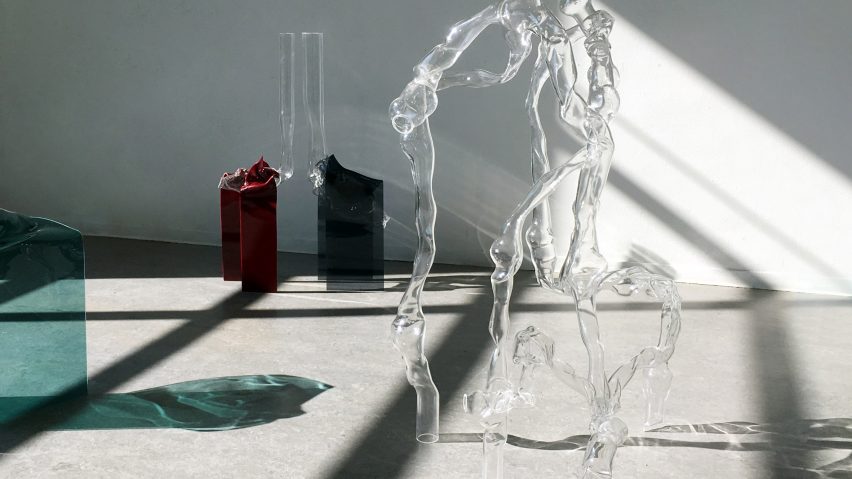
Dorian Renard blows plastic like glass for a collection that reconsiders the material's value
French designer Dorian Renard has applied traditional glassblowing techniques to a series of plastic furniture and sculptural pieces, in a bid to present the maligned material in a new light.
Each of the 14 items in the collection was created entirely from plastic sheets or tubes, which were melted and blown to create warped, undulating shapes and presented as part of this year's graduate show by the Design Academy Eindhoven.
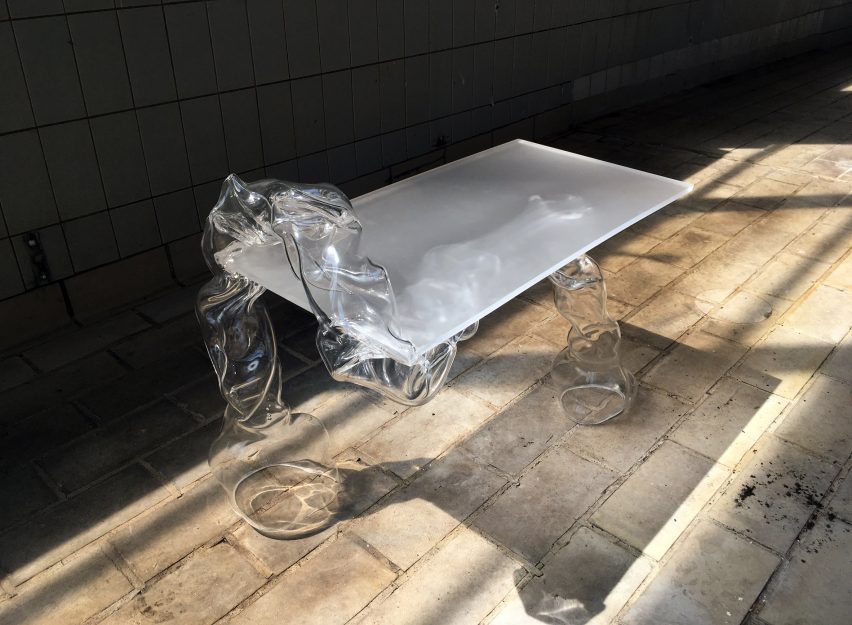
"I like playing with the contrast between the way we look at plastic and the way we look at glass," Renard told Dezeen.
"Having knowledge and know-how behind a material like we do with glass makes us value it because someone has put their energy into producing it. But we don't think about plastic like that because it's processed and shaped by machines."
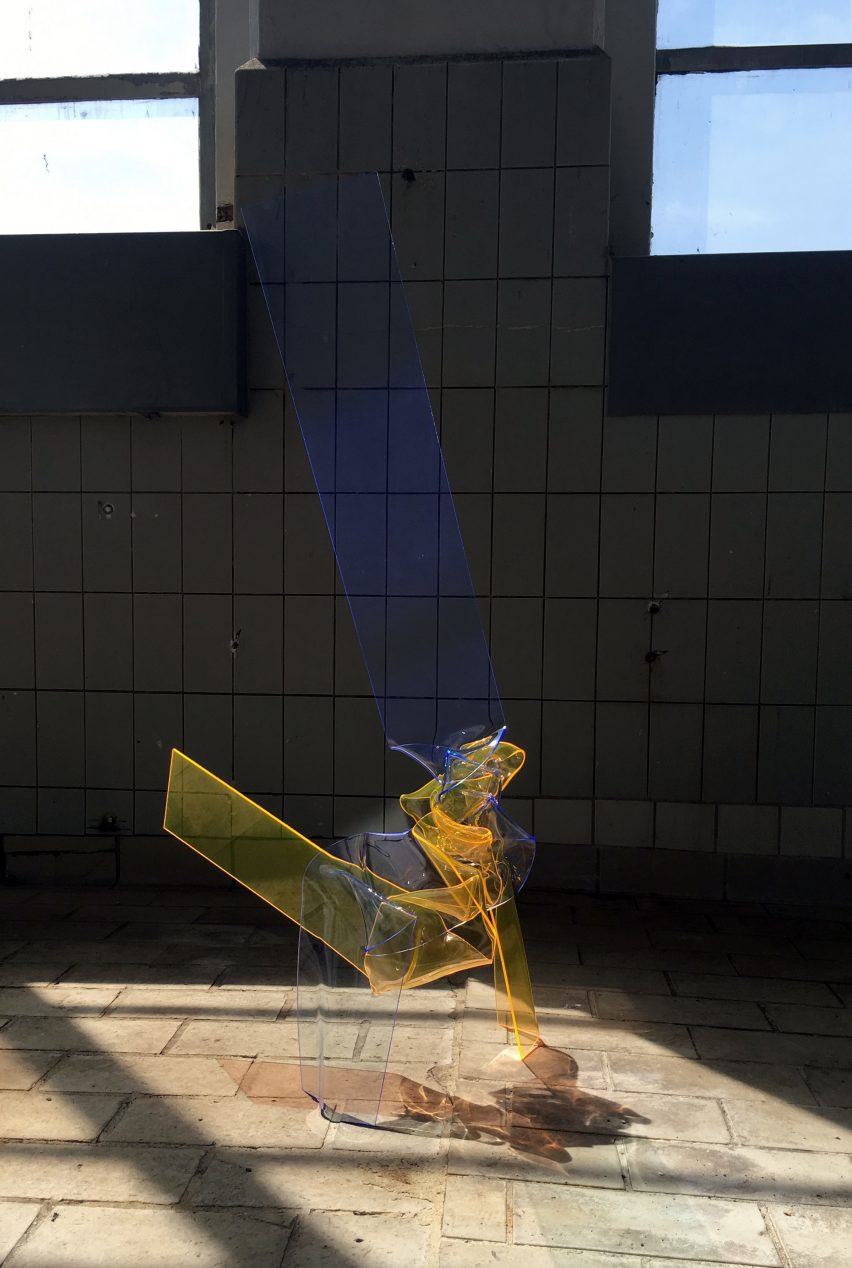
In response to this, The Beauty of Distortion series presents various experiments with the material, which bear the signs of being shaped by human hands.
All the pieces use different plastics as their base – ranging from dark red to clear, from opaque to transparent.
Some are shaped to resemble tables, stools or benches, while others are purely sculptural.
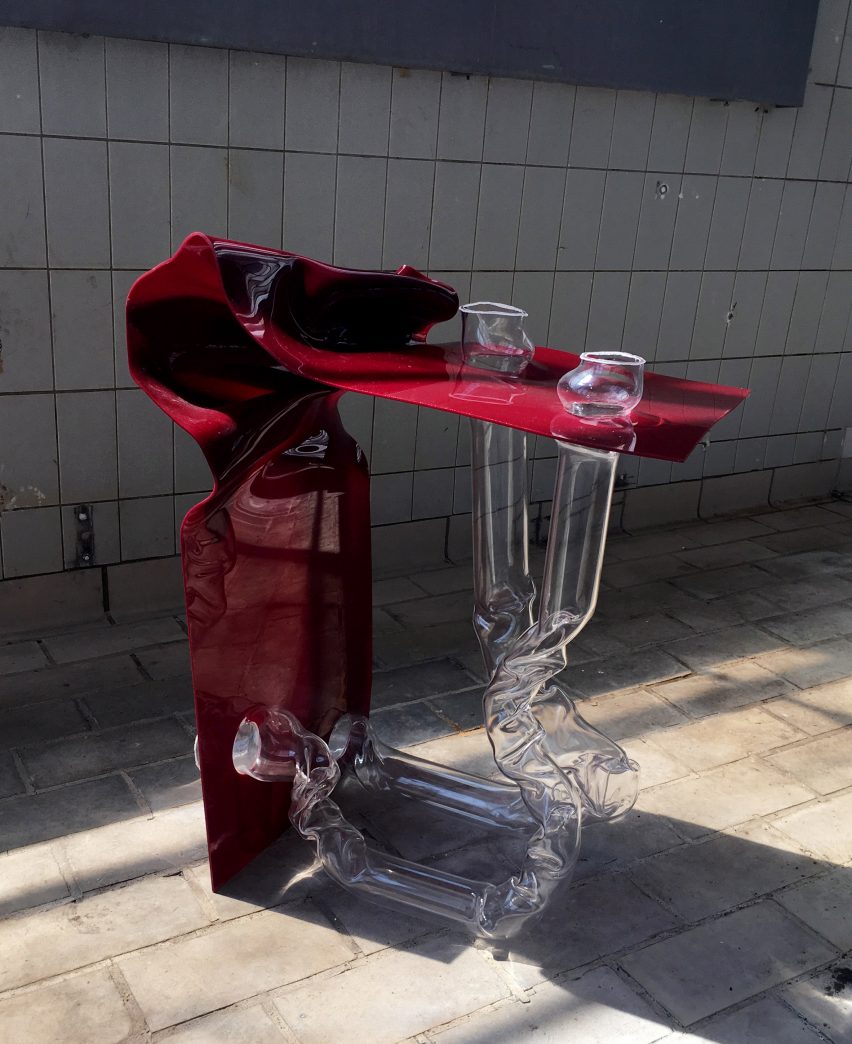
"I tried out different techniques for each, looking at how I can stretch the plastic, how I can make it stronger or what happens if I blow on both sides of a sheet," said the designer.
"I tried to build a whole new approach for plastic crafted by humans."
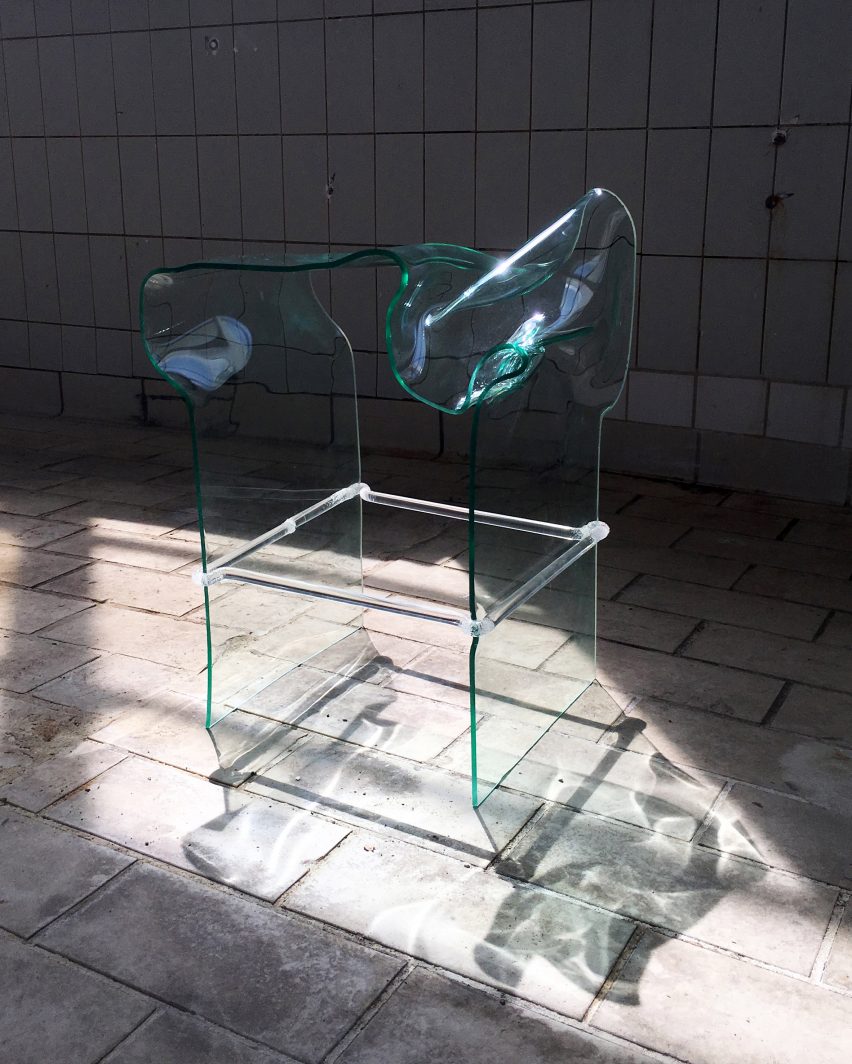
Renard was largely guided by how the material wanted to behave naturally under heat, which is something he picked up while assisting a designer in a glass factory in the Czech Republic.
"Glass is such an impatient material. It folds if you don't pay attention so you always have to deal with it," he remembers.
"I developed this real admiration for the material. I didn't think I could learn how to blow it because it would take me years and years, but melting the plastic gave me the same feeling . Under heat, the material evolves almost by itself. I just have to deal with what happens."
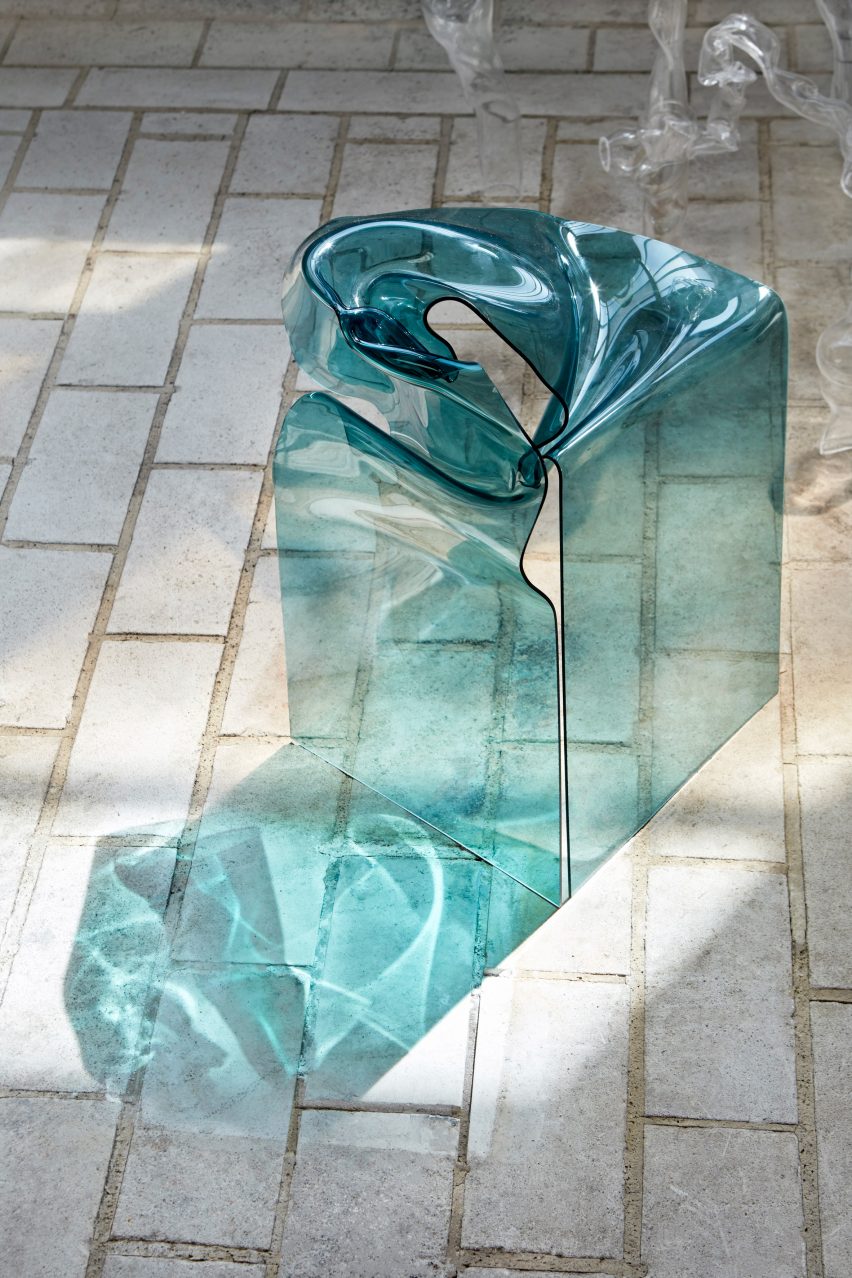
Under close and intense heat, for example, it starts to form bubbles which create a textured surface, while blowing on it makes the plastic stronger so it can be shaped into more functional pieces like a table.
All the while, it was a conscious choice on Renard's part not use recycled or bioplastics, in order to present the material in itself as worthy of being kept and cherished.
"We don't value plastic, that's why we trash it," he told Dezeen. "Even recycling means we are throwing it away first, so we don't really care for the material. What I'm doing here is caring for the plastic."
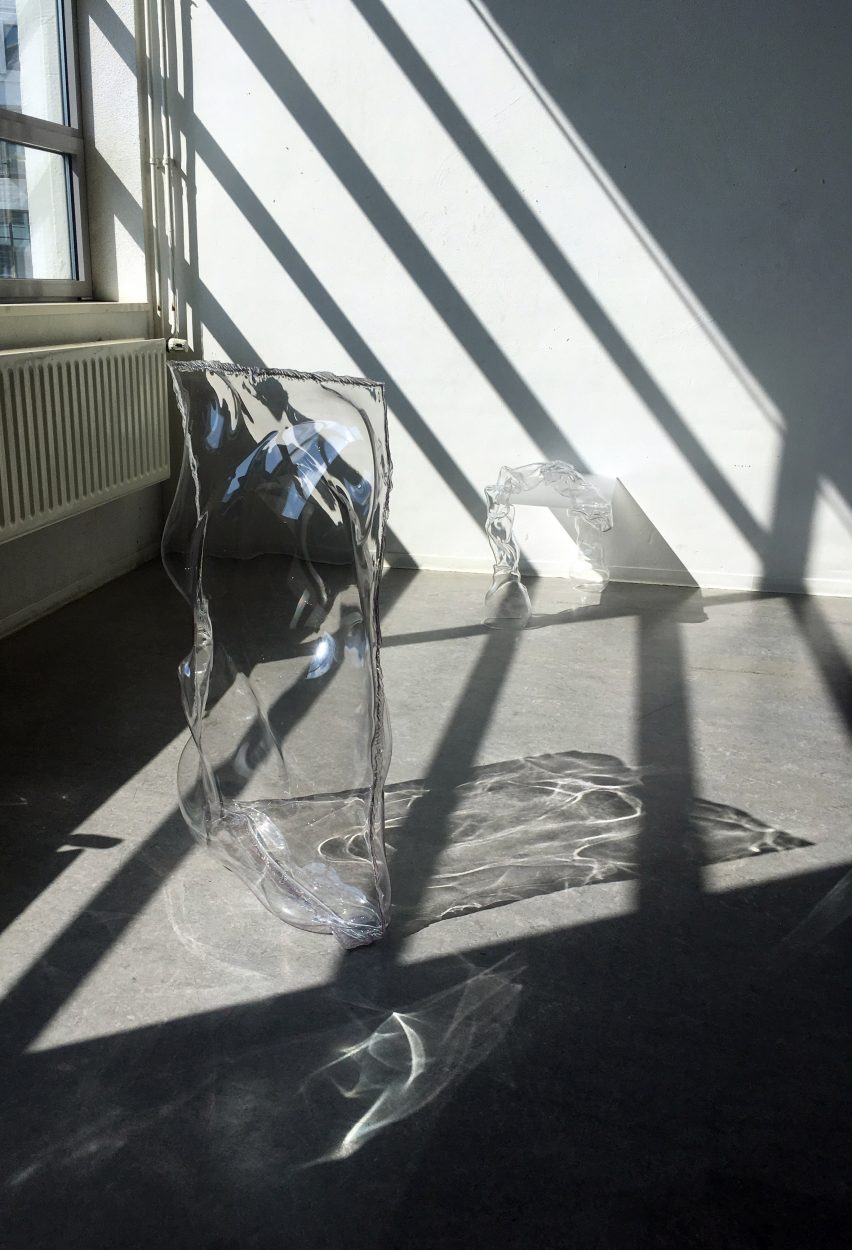
The Eindhoven graduate show is part of Dutch Design Week which – like most industry events – saw an increased focus on sustainability this year.
A talk hosted by Dezeen explored architecture and the circular economy while an installation by Studio Drift drew attention to our reliance on single-use plastic through 3,000 blue blocks, each made from a single supermarket bag.